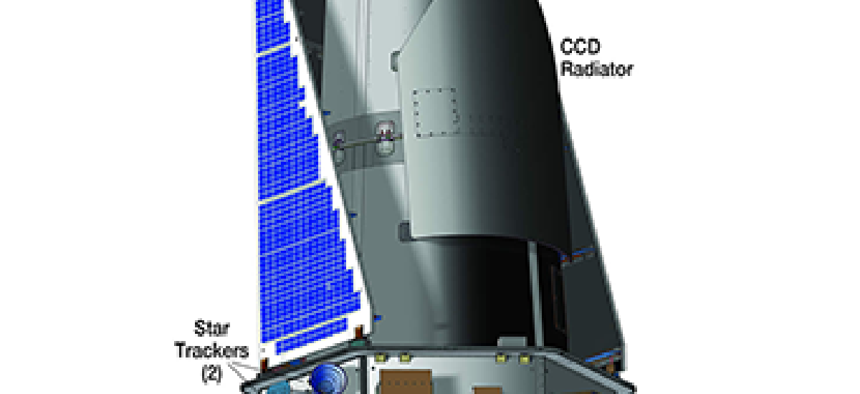Kepler space telescope's mission may be over

While NASA engineers are still working on the problem that sidelined the scope, no solution is in sight.

The reaction wheels, shown in this diagram, are the source of Kepler's woes. (NASA graphic)
NASA engineers have successfully transitioned its planet-seeking Kepler telescope to "point rest state" -- an effort to conserve fuel while an evaluation team plots a recovery effort following a mechanical failure that crippled the craft's navigational capabilities on May 4.
In point rest state, the $550 million spacecraft's four reaction wheels will not be powered, instead using a combination of its thrusters and solar pressure to tip the spacecraft back and forth like a pendulum as it orbits the sun some 40 million miles away from Earth.
The first of its four reaction wheels failed in July 2012, and the recent failure of a second made it impossible for the craft to pivot with the necessary precision for its 95-megapixel camera to ingest starlight and funnel it through a 1.4-meter wide mirror.
Some of Kepler's redundant systems, powered off as scientists tried to isolate the problem, have been powered on to keep the spacecraft within nominal operating parameters, according to Kepler Mission Manager Roger Hunter, but Kepler will not be collecting any scientific data in point rest state.
If an anomaly response team that includes members of the NASA Ames Research Center, the Jet Propulsion Laboratory, contractor Ball Aerospace and reaction wheel manufacturer UTC cannot find a solution to the failed reaction wheels, Kepler's day of spotting planets may be over forever.
"For now, (point rest state) is working very well and keeping Kepler safe," Hunter said. "The team will continue to analyze recent telemetry received from the spacecraft. This analysis, and any planned recovery actions, will take time, and will likely be on the order of weeks, possibly months."
The team will validate any such efforts on the spacecraft test bed, he added.
NASA launched Kepler in 2009 to seek Earth-like, potentially habitable planets in the Milky Way galaxy. It has found 132 confirmed such planets, and more than 2,700 potential ones that scientists will attempt to confirm using ground telescopes in the coming months and years.
Kepler detects planets by watching for changes in the brightness of stars. When an object orbiting the star comes between Kepler's view of the star and Earth, Kepler can detect minuscule changes in brightness, sometimes providing enough information for scientists to estimate the potential planet's size and orbiting distance from the star.
Scientists have said they expect more than 90 percent of the planets Kepler has found thus far to be confirmed. NASA officials said scientists will sift through a large amount of so-far unexamined Kepler data over the next two years.






